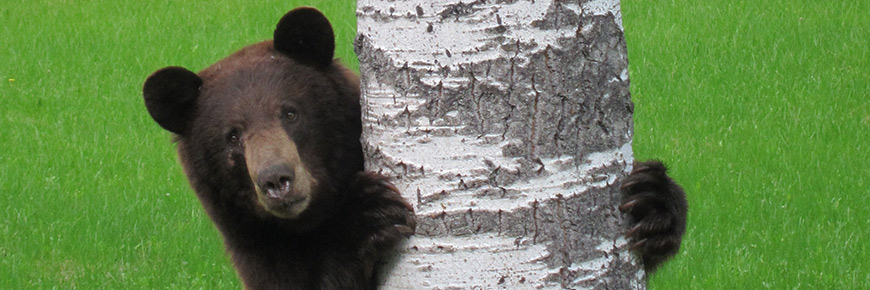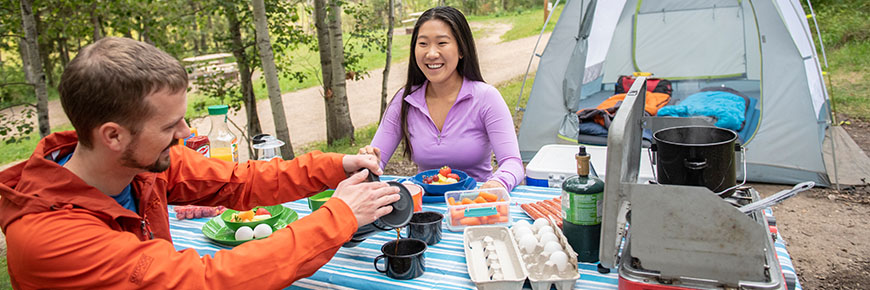
Wildlife safety
Elk Island National Park
Elk Island National Park is 194 km2 of forest, bogs and prairie. Exploring the scenic isolation of a national park can be invigorating, and it can also be challenging. Bison, elk, moose, white-tailed deer, wolves, foxes, cougars and black bears call Elk Island National Park home.
The chance to observe wild animals as they go about their natural lives is one of the most fascinating experiences that Canada's national parks have to offer. While this experience is captivating, it is important to remember that animals are wild and their behaviour is unpredictable.
Wildlife viewing
Conflict between wildlife and visitors in Elk Island National park is rare thanks, in part, to visitors keeping a safe distance. Never approach wildlife. Animals in the park are wild and may react to perceived threats when startled, threatened, or protecting their young. Visitors can avoid negative interactions with wildlife by maintaining a safe distance from animals, being aware of their surroundings, and knowing what they should do if they encounter wildlife.
What’s a safe distance? Be bear aware and do not stop to see bears. For the majority of other animals, use your thumb. Extend you arm and hold your fist straight out in front of you. Extend your thumb. Cover the animal (who is standing sideways) with your thumb. If the animal is totally covered, you are about 100 metres away, which is a safe distance. If your thumb does not cover the animal, retreat slowly. Consider that even small animals, such as ground squirrels, are wild, may bite, and transmit disease.

View wildlife safely by following these tips:
Welcome to bison country
Understand bison behaviour to have an enjoyable and safe visit. Learn more about being bison wise.
Time of day matters
Be alert at dusk and dawn when females and their young travel.
Time of year matters
Spring is calving season. Females of all species defend their young if they feel threatened.
Beginning in late summer and lasting throughout the fall is the breeding season, or rut, for elk, deer, moose and bison. Male animals are more aggressive during this time.
Ensure pets are on a leash and under control at all times
Pets cause stress for wildlife. Dogs may be seen as a threat, and can harm or kill wildlife.
Dogs who chase wildlife are often chased right back to their owners with an angry animal behind them.
For the safety of pets and wildlife, it is illegal to let any pet off leash in any National Park.
It is illegal to feed, entice or disturb any wildlife in a national park. Violators may be charged, be required to appear in court, and could pay fines up to $25 000.
To report offenses call Parks Canada Dispatch: 1-877-852-3100.

Keep a clean site
Keep recreation areas, campsites and trails clean at all times. Store food, garbage and scented items in a vehicle or a bear proof storage container when not in use.
Leaving scented items unattended, even for a few minutes, puts visitors and wildlife at risk and may result in a fine. Remember, cooking in or near a tent is dangerous because lingering odours may attract wildlife.
Items to store when not in-use:
- coolers - full or empty
- food - wrapped, unwrapped, or in containers
- garbage/wrappers
- dishes/pots/cutlery - clean or dirty
- empty beverage containers
- pet food/bowls - full or empty
- bottles/cans - open or unopened
- barbecues - clean or dirty
- any other items used for food preparation or that have a smell or scent
- scented products - such as shampoo, toothpaste, candles, citronella, dish soap, sunscreen, lip balm, dish towels
Review all camping safety tips, regulations and etiquette before planning a camping trip to Elk Island National Park.
Emergencies:
- Call Parks Canada Dispatch 1-877-852-3100 for incidents involving wildlife, campground disturbances, wildfire, poaching or search & rescue. Response times may vary
- In case of an emergency, call 911
- Hospitals are located in Lamont, Sherwood Park, and Fort Saskatchewan
- Date modified :